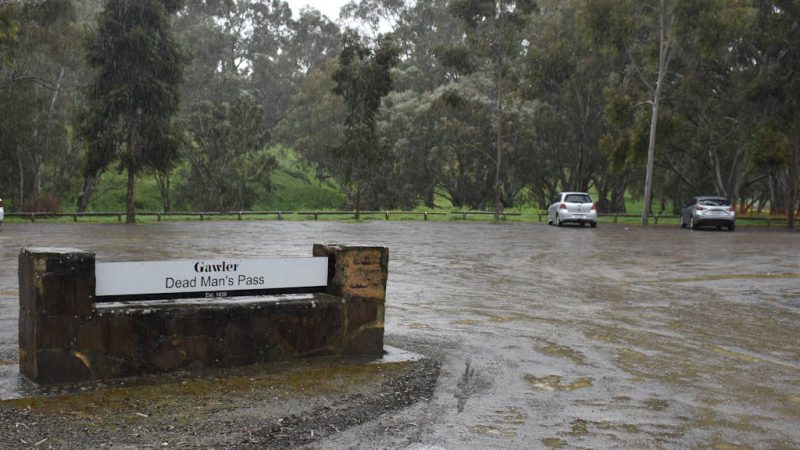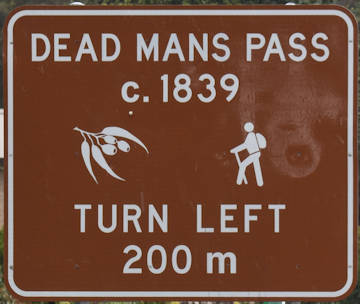Riverside shared pathways is a feature of Gawler with a series of trails called the River Path, or Tapa Pariara. Dead Man’s Pass is along the South Para River with paths connecting through to Clonlea Park on North Para River ![]() and Gawler River.
and Gawler River.
Deadman’s Pass is a popular spot for picnics, strolling or cycling along the shared path. It is home to the famous Gawler Three Day Event where several jumps can still be seen today.
There is a large parking area but it isn’t marked so it could limit how many can park. It was raining when I was here so there were only a few there. There is a picnic table towards the left near where the path heads down to the pass across South Para River. The other side has a toilet block.

How Did Dead Man’s Pass Get Its Name?
The pass was first named as Para Pass or possibly Murray Pass. A pass was a place where a watercourse could be crossed by horses or bullock teams. This pass was a natural north-south trade route for Aboriginal people and later for early European settlers.
Colonel William Light would use the campsite at Para Pass when exploring the region. In 1939, he returned to the area to do a 4000-acre special survey of what became Gawler. The survey area for Gawler sat between the North Para and South Para Rivers.
He came across a dead man, believed to be near a large red gum, in 1839. There are four accounts of the dead man being found, each could be the true story. Whether or not any of them is the true story, the pass became known as Dead Man’s Pass and retains the name today.
Stories of Dead Man’s Pass
The following items are found on in Gawler’s newspaper, Bunyip, in March 1938 ![]() .
.
Diary of Colonel Light
13th January, 1839.
Returned to the Para. We halted here the rest of the day. Having heard of a dead body being under an old tree, we examined the spot and found it. There is a mystery in this affair as it had been kept a secret. The skull is large and the flesh almost entirely hone. Part of his dress remained. His trousers of corduroy seemed good as far as his knees – under those much torn. His shirt on one part contained much coagulated blood. The body was covered over again and some of his clothes packed up and conveyed to Adelaide.
Sailor From a Ship Off Port Gawler
Reminiscences of Hon. B. T. Finniss suggests the dead man was a sailor, escaped from a ship off Port Gawler. The man became lost in the scrub trying to find his way to Adelaide. He was found by a party, rushing out of the scrub and falling, exhausted and needing food and water.
Caring for the man, he soon died. They buried him in a hollow gum tree so his body would not be taken by wild dogs. They called the tree, Dead Man’s Tree.
The reminiscences also suggested the body was buried in an upright posture, plastered with clay. The entire body was covered with the exception of toes. When the body was discovered, it had mangled feet, evidently discovered by wild dogs.
Suspicious Case
From the “Southern Australian” in January, 1839. The body of a man buried some time ago was found by Colonel Light and Mr. Finniss whilst on a surveying expedition. It was found that the shirt, vest, and trousers were stained with blood and his pockets turned inside out.
At the time of the reported death many months ago, no inquest was held as there ought to have been. We trust the coroner will not be allowed to neglect his duty.



